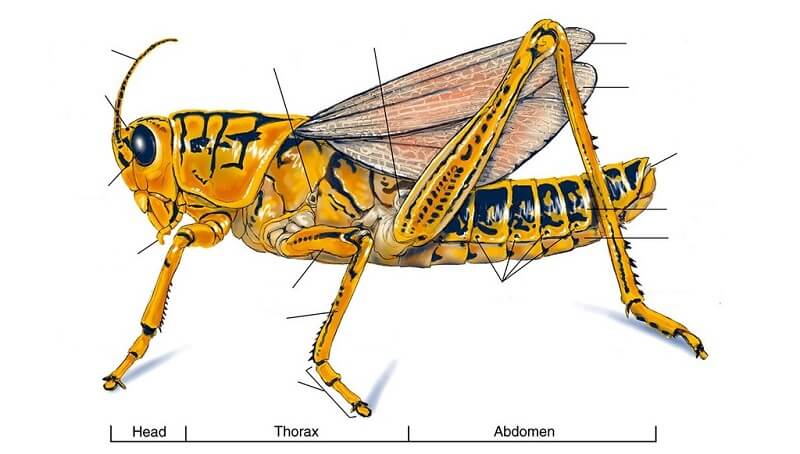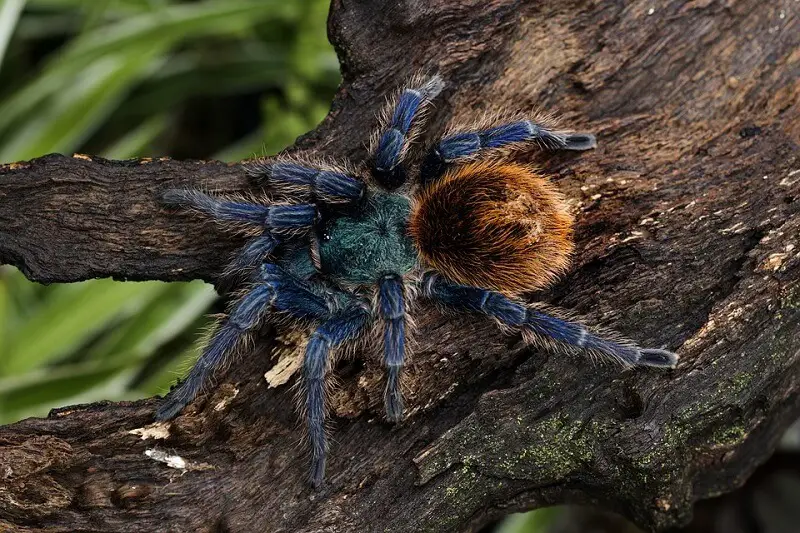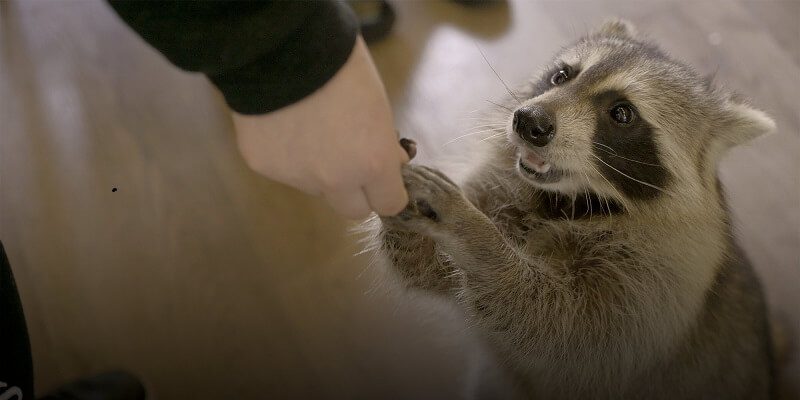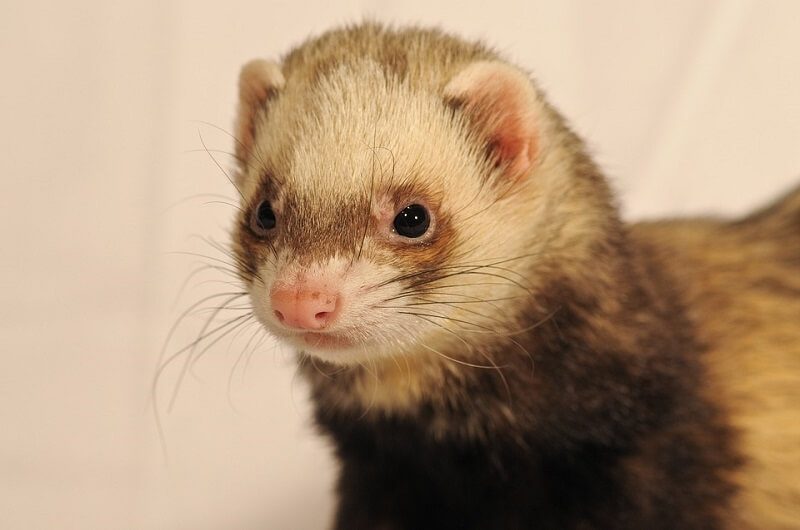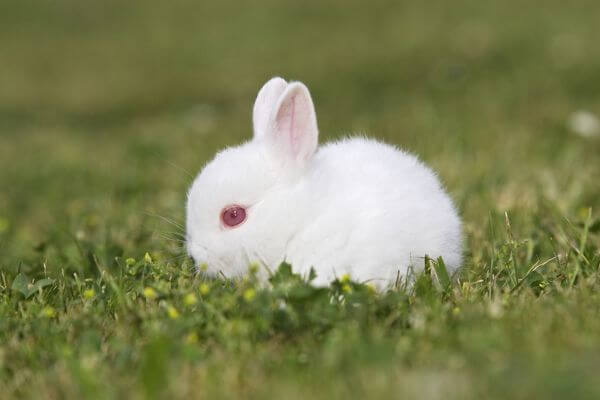The cricket is a creature that is classified in the order known as “Orthoptera”. There are two other very popular members of this family and these are the grasshoppers and the katydids.
These creatures are based together inside the Orthoptera group especially due to their shared anatomical characteristics.
But what are the parts of a cricket’s body?
Crickets are made from multiple parts, but the three major ones are the head, thorax, and abdomen. On the head you will find the palpi, antennae, eyes, and mouth, while attached to the thorax will be its wings and legs. The abdomen will cost the spiracles, ovipositor, and cerci, and is the biggest part of the body of a cricket.
Some other characteristics that you will notice at crickets that will take a more detailed examination to spot would be their mandibulate mouthpart, enlarged pronotum, large hind legs that are great for jumping, a narrow, segmented body, and straight wings.
You might also like my articles about mealworms, grubs, and snails.
I will only talk about the general anatomy of the most common cricket, which is the field cricket, although there are a few different types out there.
The body parts of a cricket
| Anatomical Section |
Function |
| Head | |
| Palpi | These are Appendages that are close to the mouth and can be used for grabbing the food |
| Simple Eyes | Are used only to differentiate between light and dark and are made of a single lens |
| Compound Eyes | Are made from 6 different lenses and will help them to see in multiple directions |
| Antennae | These will help the a Cricket smell and feel their surrounding environment |
| Thorax | |
| Hind Wings | These wings are fragile and will be used for flying and chirping |
| Jumping Legs | These are stronger wings that will protect the hind ones |
| Fore Wings | These posterior legs will help when jumping |
| Walking Legs | These legs are four in number and will help for walking |
| Abdomen | |
| Cerci | The cricket uses this sensory organ to guide itself in the surrounding environment |
| Ovipositor | This organ is made for laying eggs and can only be found in females |
| Spiracles | These are small holes that are used to absorb oxygen |
The anatomy of the cricket is divided easier into two parts:
- The external anatomy
- The internal anatomy
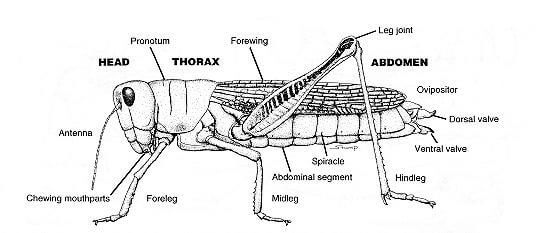
Looking at the external anatomy, we will notice that it is split into a few anatomical parts, each of them useful in its own way with different body functions. Its body is made of three major, easily distinguishable parts: The head, the abdomen, and the thorax.
Getting into even more detail, these three parts will also host the spiracles, the ovipositor in females, the stridulating organ, the wings, legs, neck, mandible, antennae, eyes, and exoskeleton.
The body of a cricket will undergo some noticeable changes when going through its life cycle, from an egg to an adult insect. Their body is surrounded by a hard exoskeleton, which means that they won’t be able to grow over a certain point without molting (shedding) their skeleton.
Before crickets can become fully grown adults and get their wings, they will actually have to go through molting a few times.
The head of a cricket is encapsulated in an exoskeletal cranium, just like other creatures, and it has 4 pairs of appendages that are called sclerites.
An interesting aspect about crickets is that they don’t have just one pair of eyes, but a couple. The simple eyes will help them to notice differences between light and darkness, while the more complex, hexagonal compound eyes on its head will allow it to see in multiple directions at the same time.
These creatures will also use the two antennae on their heads to smell and feel their surroundings. This helps them to notice smells and identify other things within the surrounding environment. The antennae of a cricket will usually be of similar sizes as its thorax.
The palpi, an organ shaped like an appendage, is situated right underneath the head of a cricket and is used for grabbing food and biting.
The cricket will have a thorax as its middle part, and this will be made of three individual segments: three pairs of legs and a pair of wings.
The posterior legs are longer in size and stronger, being perfect for jumping, while the two anterior pairs of legs will be identical in size, smaller, and great for walking.
You won’t be able to catch a cricket too easily because of its hind legs and its jumping capabilities.
Crickets have two pairs of wings. Each pair of wings comes with its own function and acts as a double layer of the body wall.
The fragile set of wings will be protected by the forewings, which are stronger.
The male crickets will rub the two forewings together to create a unique sound, known as the chirping of crickets. Every species of crickets will have a chirping sound that will be unique to it.
This sound is used by male crickets to attract females of the same species for mating.
The last part of a cricket’s body is its abdomen, made of eleven segments and the genital organs. You can spot females by their ovipositor, an elongated organ that is solely used to produce and lay eggs.
You will also see spiracles and cerci on a cricket’s abdomen. These organs have different, unique functions. Spiracles are the small holes that are found on the side of its abdomen and will allow the air to travel to the tracheal system, while the cerci will allow it to feel any surfaces it touches.
The oxygen will be removed from the air that gets inside the tracheal system and circulated inside the body to all of the cricket’s organs.
On the other hand, the cricket’s internal anatomy is made of other systems that have to work together for a cricket’s healthy development.
Like most other creatures, a cricket will also feature nervous, circulatory, reproductive, respiratory, and digestive systems and all their corresponding organs.
The cricket has a digestive system that will start at the pharynx, that will open right into the esophagus, and then goes further to become the inner thorax or crop. Inside the thorax, they have two salivary glands that produce the necessary enzymes to break down any food it eats. The crop then reaches its end, turning into the intestines, colon, and rectum.
Experienced biologists are able to spot the cricket’s species just by examining its feces because the fecal pellets will have the same shape as the markings on the rectum walls. Inside the walls, a fat body will be lined, which stores most of the carbohydrates and lipids. This fat body is also used to create eggs in the case of female crickets.
The ovaries of a female cricket will keep eggs shaped like a banana and a seminal receptacle that can hold the necessary substances until the female can lay the eggs.
Crickets and other insects have a respiratory system just like most creatures, although their will function pretty differently. The holes on the sides of the abdomen, called spiracles, will absorb the oxygen directly into the insect’s body tissues. This means that a cricket could also drown pretty easily if it gets completely submerged in water.
